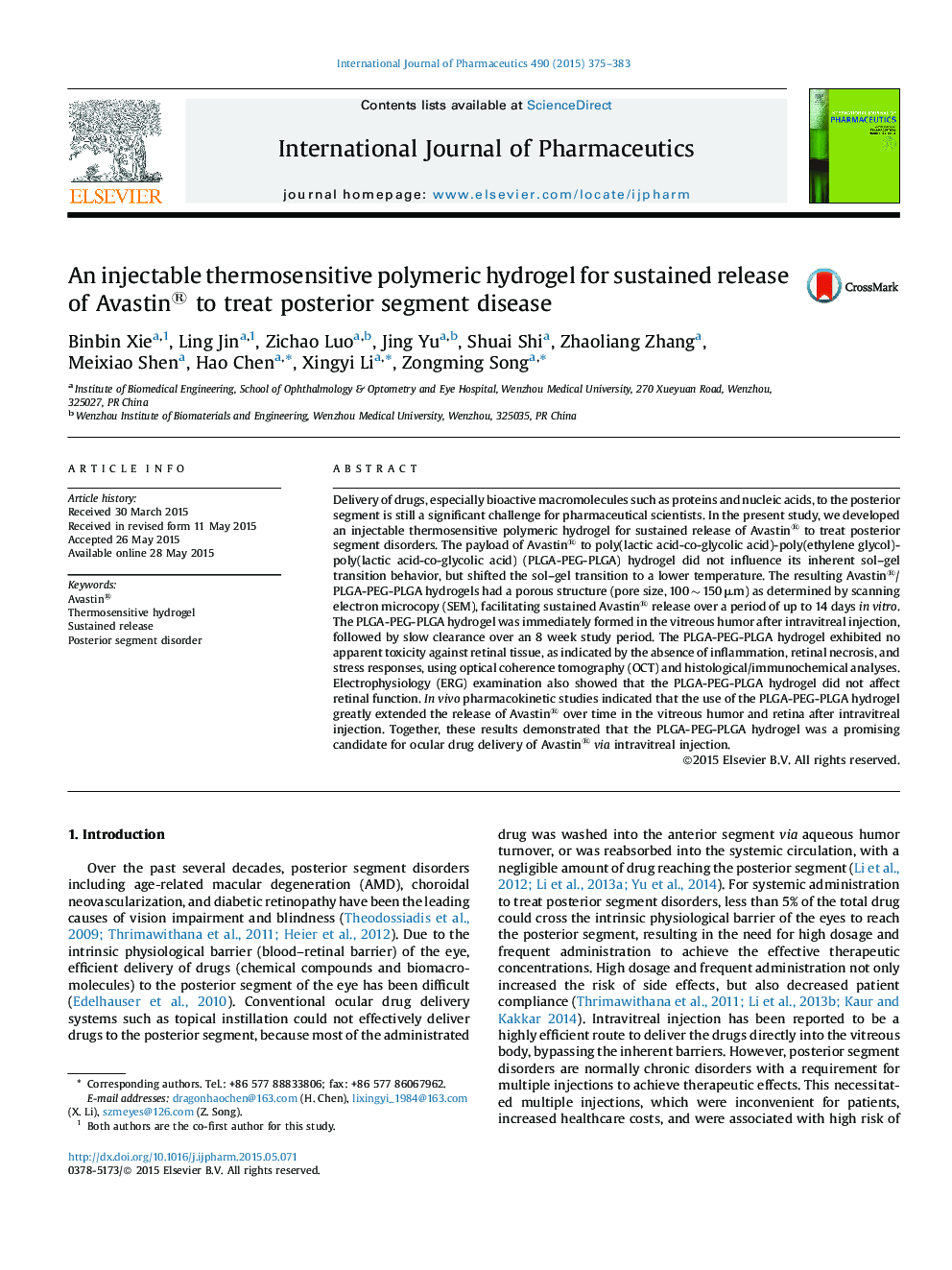| Article ID | Journal | Published Year | Pages | File Type |
|---|---|---|---|---|
| 2501322 | International Journal of Pharmaceutics | 2015 | 9 Pages |
Delivery of drugs, especially bioactive macromolecules such as proteins and nucleic acids, to the posterior segment is still a significant challenge for pharmaceutical scientists. In the present study, we developed an injectable thermosensitive polymeric hydrogel for sustained release of Avastin® to treat posterior segment disorders. The payload of Avastin® to poly(lactic acid-co-glycolic acid)-poly(ethylene glycol)-poly(lactic acid-co-glycolic acid) (PLGA-PEG-PLGA) hydrogel did not influence its inherent sol–gel transition behavior, but shifted the sol–gel transition to a lower temperature. The resulting Avastin®/PLGA-PEG-PLGA hydrogels had a porous structure (pore size, 100 ∼ 150 μm) as determined by scanning electron microcopy (SEM), facilitating sustained Avastin® release over a period of up to 14 days in vitro. The PLGA-PEG-PLGA hydrogel was immediately formed in the vitreous humor after intravitreal injection, followed by slow clearance over an 8 week study period. The PLGA-PEG-PLGA hydrogel exhibited no apparent toxicity against retinal tissue, as indicated by the absence of inflammation, retinal necrosis, and stress responses, using optical coherence tomography (OCT) and histological/immunochemical analyses. Electrophysiology (ERG) examination also showed that the PLGA-PEG-PLGA hydrogel did not affect retinal function. In vivo pharmacokinetic studies indicated that the use of the PLGA-PEG-PLGA hydrogel greatly extended the release of Avastin® over time in the vitreous humor and retina after intravitreal injection. Together, these results demonstrated that the PLGA-PEG-PLGA hydrogel was a promising candidate for ocular drug delivery of Avastin®via intravitreal injection.
Graphical abstractFigure optionsDownload full-size imageDownload high-quality image (168 K)Download as PowerPoint slide
